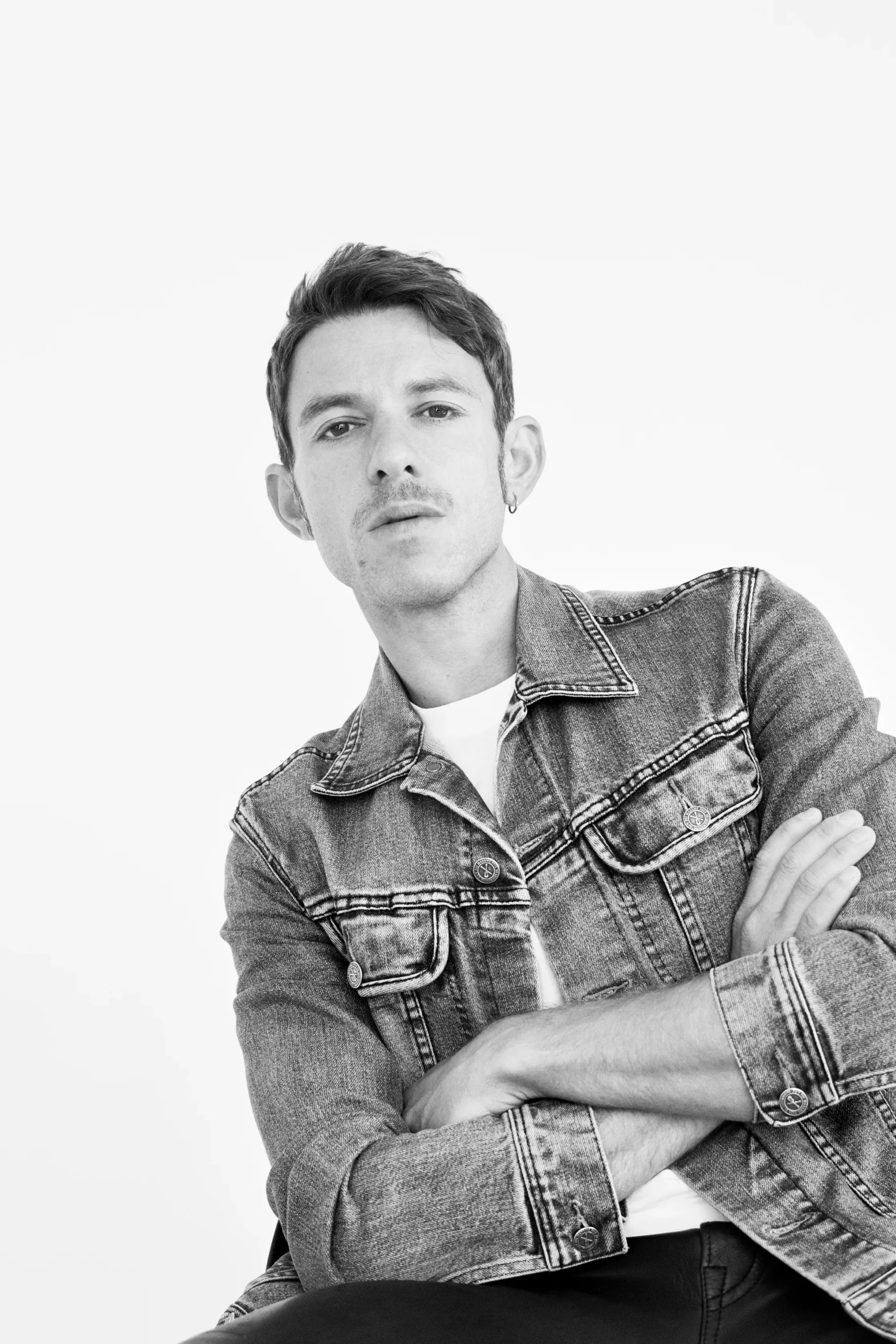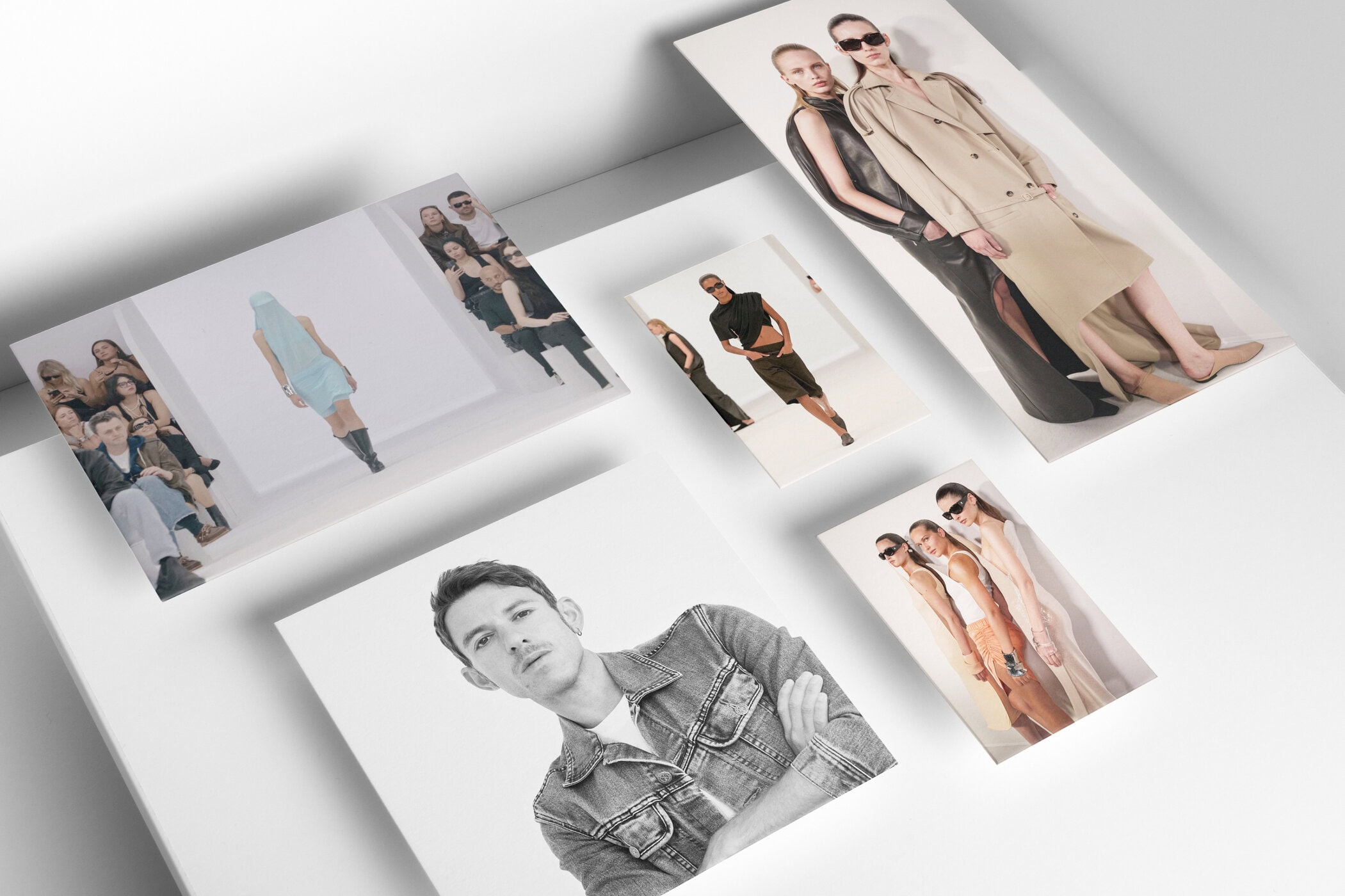A Heliocentric Vision: Di Felice re-centers Courrèges around light, geometry, and ease.
By Mackenzie Richard Zuckerman
For his latest Courrèges collection, Nicolas Di Felice began with a simple phrase: blinded by the sun. Yet in his telling, it wasn’t about darkness or disorientation, but about recalibration — how too much light, too much information, can be overwhelming, but also inspiring. The idea set the tone for a show that unfolded like a rising temperature, beginning in cool restraint and ending in warmth and ease.

“I always begin with a feeling,” Di Felice explained. “This time it was that sensation of too much light, too much information — overwhelming but also inspiring. I thought about comfort, protection, warmth, and how to translate those ideas into clothes.”
The collection reflected that arc. It opened in icy blues, with sharper silhouettes, then gradually loosened into softer, larger, more comfortable forms. “The degrees get higher and the clothes become more comfortable,” Di Felice said. “That was important for André Courrèges too: comfort. That’s why you saw flat shoes, oversized shorts, generous coats.”
Natural fabrics emphasized the point, chosen for their breathability under heat. A multiplication of slim belts threaded through the collection as a unifying detail. And in a nod to the archives, Di Felice brought back silhouettes from the mid-1960s, when the Courrèges mini was not yet so mini — elongated jackets and skirts re-cut to resemble solar panels, playing both with history and with geometry.
There were other, unexpected references. Car windshield sun shields — ordinary, geometric, and utilitarian — became part of the vocabulary. “I love them as objects,” he said. “They’re geometric, simple, useful. At the end of the show you saw skirts that looked sculptural, but really they were just fabric lying flat, waiting for gravity. Fresh, simple, almost nothing — but to me that’s exciting.”
Music was integral too, composed in collaboration with a longtime friend. “I often think about the music as I’m designing,” he noted. “This time it was slower, more self-confident. The words were almost like a rising temperature: 21 degrees, 22, 23… the sun rising, the shadows uniting.”
Even the invitation fit the theme — reflective, dazzling, almost too bright to read. “I wanted to blind you a little too,” he said with a smile.
In his reflections, Di Felice seemed to stand in quiet dialogue with thinkers from Ptolemy to Copernicus — not redefining the cosmos, but re-centering Courrèges around its own source of light. The collection became less about being blinded and more about realignment: protection and openness, shadow and shine, fragments and clarity.
Di Felice has often said he is a storyteller, and here the story was of light itself — not as metaphor alone, but as material fact. In his hands, Courrèges became both shield and lens: a house recalibrated to orbit the sun, where even the simplest fragment of fabric could catch its glow.
